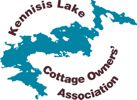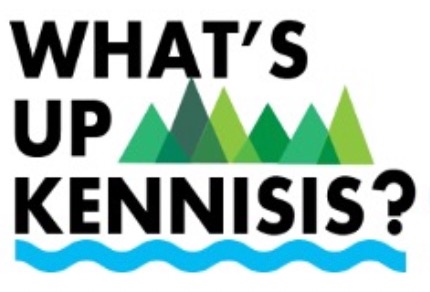Updated Sept 2024
Overview
Algae and cyanobacteria (also called blue-green algae) are plant-like organisms that live in water. They can quickly grow out of control, or “bloom.” Some of these blooms produce toxins (poisons) that can make people and animals sick.
Harmful algal blooms can look like foam, scum, mats, or paint on the surface of the water. They can also grow underneath the water, making some harmful algal blooms hard to see.
A bloom can change the color of the water—for example to green, blue, brown, or red. On the Kennisis Lakes blue-green algae will most likely looks like spilled paint along a shoreline.
Not all blooms are harmful. Blooms of algae or cyanobacteria can harm people, animals, or the environment if they make toxins, become too dense, use up oxygen in the water or release harmful gases
Blue-green algae are microscopic, plant-like organisms that occur naturally in most types of water bodies including lakes. Blue-green algae thrive in areas where the water is shallow, slow-moving and warm although it may also be present in deeper, cooler water and may not be visible.
Populations of blue-green algae can rapidly increase to form a large mass or scum, called a bloom. Blooms are most common in late summer and through the fall but can also occur in other seasons. Bloom development can be promoted by conditions such as calm water, high temperatures, and increase in nutrients such as phosphorus.
For more information on Blue Green Algae see the Ontario MECP website here: Blue Green Algae – MECP
The CHA has produced a Blue Green Algae fact sheet with helpful information about Blue Green Algae and what to do if you suspect a Blue Green Algae bloom. The CHA fact sheet can be found here: Harmful Algal Bloom – CHA
KLCOA Webinar
The KLCOA hosted a “What’s Up Kennisis” webinar in June 2022 with a focus on Harmful Algal Blooms:
Dr. Elizabeth Favot presented us with details on what blue-green algae is, what causes it and what we can do to help prevent it. She explains the science around it and the research that is being done to better understand it and how it is impacting our Lakes.
Watch the Webinar on the KLCOA YouTube Channel here!!
Blue Green Algae on the Kennisis Lakes
The Kennisis Lakes have experienced two Blue Green Algae events, one on Little Kennisis in 2020 and one in Kennisis Lake in 2023. The first was confirmed by visual images as a likely Blue Green Algae bloom, the second was confirmed by the MECP through sampling and confirmed to be a non-toxic Blue Green algal bloom.

A summary of the 2023 response can be found here: 2023 Kennisis Lake HAB Update
If you suspect a Harmful Algal Bloom:
Algal blooms more typically occur in the late summer or fall when unseasonably warm temperatures occur. The KLCOA is encouraging people to check their shorelines if they are at their properties and report any possible sightings as follows:
- Take pictures of the possible bloom and surrounding shoreline. Note the date, time and weather conditions (wind intensity and direction, wave action).
- Report the possible bloom to the MECP:
Spills Action Centre at 1-866-663-8477
MECP On Line Reporting Here (REPORT AN ALGAL BLOOM HERE).
- Collect a sample of the algae in a clean large glass container and keep the sample refrigerated.
- Notify the KLCOA.
- Stewardship Director (Jim Prince) jimprince@ sympatico.ca
- President (Deb Wratschko) [email protected]
The KLCOA is regularly in contact with the MECP and will continue to update you as new information becomes available. The KLCOA also reports possible Blue Greem Algal blooms to the Municipality of Dysart et al, the County of Haliburton and the Haliburton, Kawartha, Pine Ridge District Health Unit. There is no public notification process for reporting the existence of suspected or confirmed Harmful Algal Blooms to the community in Haliburton County. .

